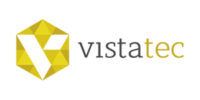Factors shaping the Globalization industry in 2015
January 15, 2015
Every now and then it’s worth taking a moment to reflect on what we — the localization community at large — contribute to the world; how we are positioned, and how our industry is evolving. Are we the go-to guys for language services? Do we culturally adapt product and related marketing assets? Are we an important part of our customers’ success on the global stage? The answer to all of the above and many other similar questions is of course a resounding ‘Yes!’.
But how are we perceived by people not directly involved within our industry? When those folks discuss the future of business and the factors affecting their growth potential in 2015 and beyond, what are the topics they muse over? For the Localization industry to fully realize its potential and rightful position in global commerce, we need an evolved value statement that demonstrates an understanding of global macroeconomic factors, as well as the commercial and technological trends shaping our lives today.
The process of Localization facilitates organizations the world over to reach vast numbers of consumers from divergent backgrounds and locales with their message, informing and influencing towards a certain behavior, creating engaging and compelling experiences and outcomes for those consumers, and thereby truly aiding to optimize an organizations global commercial potential. In order to do this effectively the protagonists within our industry must be able to both predict and react to commercial, societal and technological progressions and transformations.

So what are the macro factors driving change in today’s marketplace and what are the conversations we as an industry need to be ready for in 2015?
Big Data
As the ‘data explosion’ continues apace organizations will be challenged to determine exactly what kind of content must be localized, within what time frame, and by what means (human, automated, and so forth). This will evolve the conversations around Time, Cost and Quality to a whole new level. The purpose, impact and intended outcome of localized content, in the context of what organizations are hoping to achieve commercially at a tactical and strategic level, will drive the decision making process. Big Data will play an increasingly important role when analysing and curating incredibly large volumes of data which will help to inform these decisions.
Mobile
The continued move towards mobile, and we must now consider wearables in that category, will not relent. This will continue to drive change within our industry and how we approach this kind of content environment in many ways including, language quality, style, real estate limitations, product testing, and so forth.
Digitization
Digitization of content is changing the ways organizations work, and not just from a go-to-market perspective. Digitization of all kinds of corporate assets is influencing the ways that organizations procure a variety of services from localization to IT, often times with this process becoming much more decentralized and fragmented.
Other critical impacts of Digitization include the impact that it has on distribution models both in terms of product but also related marketing and support materials. All of this also brings the importance of SEO in general, and Multilingual SEO in particular to the fore.
Share of Voice
Having called out the relentless growth in content, the continued Digitization of assets, and the reduced real estate with which organizations have to work with in a mobile environment, a major challenge for organizations of all kinds will be capturing and retaining Share of Voice in an incredibly cluttered market with many divergent media channels.
Agile (Speed)
As product development cycles become increasingly iterative and product road maps become more fractured, Agile development will become the norm, creating increased pressure on localization supply structures, accelerating evolution in workflow automation, reducing product release schedules, and driving value for the organization and its customers.
Diverging Quality Expectations (Tolerances)
Organizations will explore ways to make more localized content available for consumption at increased velocity, and will be more amenable to varying quality standards depending on the type of content and its intended consumer. Consumers, cultured and already conditioned to varying standards of linguistic quality will become more tolerant and will accept greater access at the cost of slightly lower quality.
Tools Development & Software
Localization environments and related infrastructure are becoming increasingly sprawling and complex. While there are always software providers and systems integrators purporting to have solutions that simplify everything, the reality is that the growing importance of content and information as front line corporate assets means that organizations increasingly need to figure out ways of connecting disparate systems. Be prepared to have plenty of conversations about seamless Cloud solutions, API’s, interoperability and connectivity.
Automated Translation
Automated translation or machine translation, while not perfect, will become more mainstream. Organizations will develop intelligent systems and processes to optimize automated translation outcomes. Systems interoperability will provide for more creative and diverse automated translation environments. Organizations will become more creative about the application of automated translation technologies and will leverage them to resolve increasingly diverse commercial and communication challenges.

